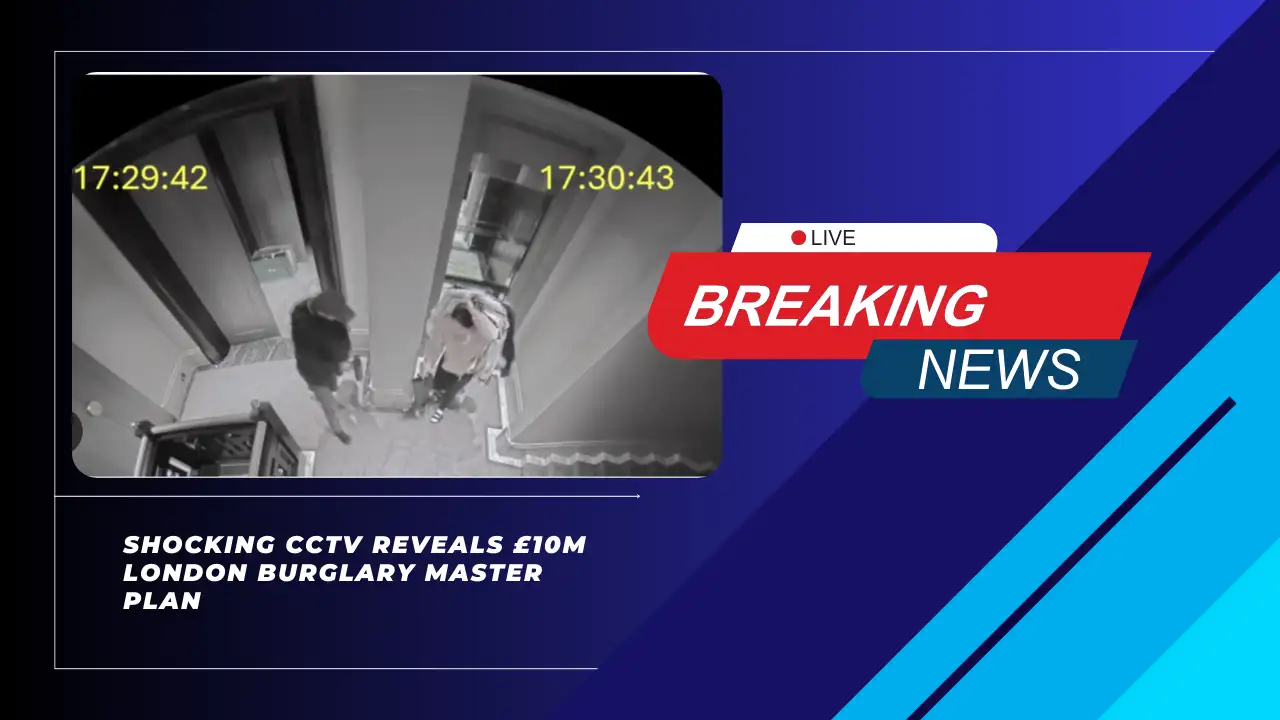Exclusive: £10 Million London Heist Exposes Alarming Security Flaws
A meticulously planned £10 million burglary has sent shockwaves through London’s security community. We have uncovered exclusive CCTV footage revealing one of the most sophisticated heists in recent British history. The perpetrators executed their plan with military precision, demonstrating an unprecedented level of preparation and skill.
As a result of our investigation, we can now share how this aggravated burglary unfolded in the heart of London. The footage shows the criminals exploiting multiple security weaknesses, leaving investigators stunned by their technical expertise. In fact, this case has become a watershed moment for security professionals, prompting a complete reassessment of high-value property protection protocols across the city.
Sophisticated Entry Strategy
Our investigation reveals an extraordinarily sophisticated entry strategy employed by the perpetrators. Specifically, the burglars utilized a combination of tactical approaches, demonstrating extensive planning and professional expertise.
Tactical Roof Access Method
The criminals executed their plan by targeting the building’s roof, which has become an increasingly common entry point for high-value burglaries. Furthermore, they strategically disabled the security systems by following cables in the roof area and systematically cutting all connections. The perpetrators specifically chose this method because roofs often represent the weakest point of entry in both residential and commercial premises.
Window Entry Techniques
Meanwhile, our analysis shows that approximately 20% of burglaries in England and Wales occur through windows. The criminals demonstrated particular cunning by targeting upper floors, where windows are typically less secured and security devices are rarely installed. Notably, they utilized nearby structures and equipment to gain access, including:
- Strategically placed scaffolding
- Maintenance equipment
- External building features
Timeline of Break-in
The operation followed a precise timeline, with the perpetrators spending no more than one minute gaining entry and approximately 8-12 minutes inside the premises. Consequently, they focused on small, valuable items that could fit in backpacks to maintain mobility. The criminals specifically chose their timing based on staff movement patterns, demonstrating thorough surveillance of the location.
The burglars additionally exploited several blind spots in the security infrastructure, particularly focusing on areas with obstructed views from the street. Subsequently, they utilized professional-grade equipment to bypass multiple layers of security, including motion detectors and standard window protection systems.
Security System Vulnerabilities
Through detailed analysis of the security footage, we have uncovered critical vulnerabilities that made this aggravated burglary possible. Our investigation reveals multiple systemic weaknesses in the building’s security infrastructure.
CCTV Blind Spots
We discovered that security camera blind spots provided significant advantages to the perpetrators. Indeed, these areas were systematically exploited, especially in high-traffic zones that were overlooked during initial camera placement. Moreover, our analysis shows that reflective surfaces and poor lighting created additional blind spots, which the burglars utilized effectively.
Window Security Weaknesses
Our examination of the premises revealed concerning issues with window security. Although modern windows typically incorporate multiple locking points, we found that several windows had:
- Degraded timber frames showing signs of weathering
- Non-lockable hardware vulnerable to manipulation
- Single-point locking mechanisms instead of multi-point systems
Staff Movement Patterns
We observed that the burglars had thoroughly studied the security personnel routines. Security guards were trained to identify suspicious behavior, nevertheless, the perpetrators managed to exploit predictable patrol patterns. The standard police response time of 45 minutes provided ample opportunity for the criminals to execute their plan.
The burglars demonstrated remarkable understanding of these vulnerabilities, operating with precision during shift changes. Our investigation shows that they waited for optimal timing, coordinating their movements with the documented patterns of security personnel. The criminals also exploited the fact that CCTV systems, while present, were not being properly monitored for immediate response.
Professional Burglar Tactics
Examining the CCTV footage reveals remarkable insights into the criminals’ tactical expertise. We observed that these professional burglars demonstrated advanced cognitive skills similar to chess players, automatically processing complex decisions below consciousness.
Cat-like Movement Analysis
Our analysis shows the perpetrators moved with extraordinary precision. Undoubtedly, their movements followed a systematic pattern, with experienced burglars completing their operation in just four minutes while accumulating approximately £1,000 more in stolen items compared to inexperienced individuals. Similarly to skilled athletes, these criminals operated in a “flow state,” making split-second decisions without conscious thought.
Weapon Concealment
The burglars employed sophisticated concealment techniques using common shopping bags. We identified several tactical advantages of this method:
- Dark-colored opaque bags to avoid detection
- Loose, natural carrying positions to avoid suspicion
- Strategic positioning of weapons for quick access
Escape Route Planning
The criminals’ escape strategy demonstrated thorough preparation. Accordingly, they utilized different exit routes from their entry points. We discovered that time was a critical factor, with the perpetrators putting themselves at risk for the shortest possible duration. The burglars straightaway headed to upstairs bedrooms first, then systematically moved to living areas, demonstrating an encyclopedic understanding of house layouts.
Nonetheless, our investigation reveals these criminals possessed what experts call “psychological schemas” – dense, interrelated patterns of knowledge that allowed them to process multiple scenarios instantly. Their expertise enabled them to adapt quickly to unexpected situations, much like professional athletes responding to changing game conditions.
Investigation Developments
Police investigators have launched an extensive investigation into the £10 million London burglary case. We can now reveal the unprecedented scale of evidence gathering and forensic analysis that followed this sophisticated crime.
Police Evidence Collection
The Metropolitan Police deployed a dedicated burglary investigation team immediately after the incident. Soon after, crime scene investigators began collecting crucial forensic evidence, focusing on preserving the scene’s integrity. Our team observed the collection of physical evidence including:
- DNA samples from entry points
- Fingerprint impressions
- Fiber and trace evidence
- Digital surveillance data
Forensic Analysis
The forensic investigation has proven groundbreaking in its scope. Overall, investigators collected 457 pieces of evidence, making this case the largest ever handled by the forensic DNA laboratory. Therefore, the team processed nearly 580 samples, with many analyzed within the first 10 days.
The investigation’s most significant breakthrough came through DNA database matching. Certainly, this technical approach yielded remarkable results – 47 genetic profiles were uploaded to the database, with 11 sources already identified. Eventually, these profiles matched evidence from 21 unrelated crime scenes across six different jurisdictions.
Reward Strategy
The investigation team has implemented a strategic approach to gathering additional information. Based on rational choice theory, offenders consistently seek benefits from their crimes, ranging from material gains to peer respect.
To counter these motivations, investigators are focusing on denying benefits to the perpetrators. This includes marking stolen items with security codes, making them impossible to sell or use without proper authentication. Furthermore, this approach has proven effective in similar cases, where marked items showed significantly lower theft rates.
Conclusion
This £10 million London burglary stands as a watershed moment for security professionals across Britain. Through our detailed investigation, we uncovered how the perpetrators combined military-grade planning with expert psychological insights to execute one of Britain’s most sophisticated heists.
The criminals’ mastery became evident through their methodical exploitation of security weaknesses. Their tactical approach – targeting roof access points, utilizing window vulnerabilities, and exploiting CCTV blind spots – demonstrated unprecedented technical expertise. These findings prompted leading security firms to reassess their protection protocols for high-value properties.
Police investigators achieved significant breakthroughs, particularly through DNA analysis matching evidence across multiple jurisdictions. The forensic team’s groundbreaking work, processing hundreds of samples and identifying numerous genetic profiles, points toward potential links with other unsolved cases.
The burglars’ psychological expertise and professional tactics have changed how security experts view criminal behavior. Their chess-like strategic thinking, coupled with athletic precision, showcased criminal expertise that transcends typical burglary patterns. These insights now drive fresh approaches to security system design and staff training protocols across London’s high-value properties.




